Marktstr. 8
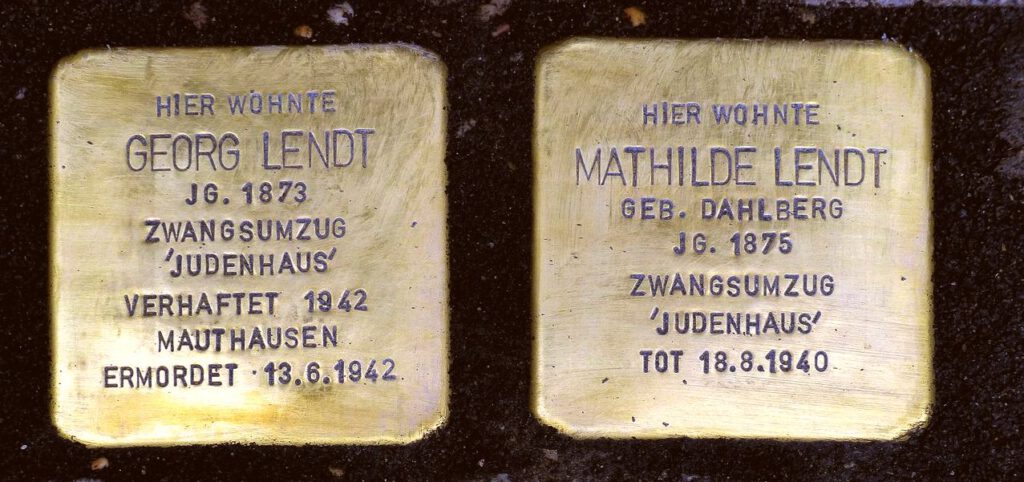
Georg Lendt was born as the second of five siblings on December 22, 1873 in Bruss, Pomerania. Today this city lies in Poland. His father, Hirsch Lendt, came from Müncheberg, a city that is located in today’s State of Brandenburg, in so-called Märkische Schweiz (Märkisch Switzerland). His occupation seems to have been that of a cantor. In the middle of the 19th century, there were 82 people belonging to the Jewish faith living in Müncheberg. At the end of World War II, 90% of the city was destroyed and traces of Jewish life could not be found anywhere except at the cemetery. The life history of the Lendt family remains in the dark, as does that of son Georg. Georg Lendt’s move from former Prussia to Frankfurt am Main, where he seems to have lived for some time, cannot be verified. Was it there where he met the family of his wife-to-be?
On December 23, 1903 Georg Lendt married Mathilde, née Dahlberg, in Göppingen. Georg Lendt’s occupation was that of a merchant. He, his wife and their two children did not take out Württemberg citizenship until June 1911.
Mathilde Dahlberg was born on August 19, 1875 in Großostheim in the administrative district of Aschaffenburg as oldest daughter of merchant Bernhard Dahlberg (1845 – 1915). Her mother Amalie, née Gärtner (1849 – 1903) came from Großostheim too, like her husband. Four children were following Mathilde. On March 20, 1895 the whole Dahlberg family (including the parents, four girls and one boy – he was the youngest of the siblings) moved to Frankfurt am Main. Thanks to Paula Kienzle’s research on the life of Jewish citizens living in Rottenburg during the 18th and 19th centuries, it is known that during the following year the two oldest daughters, Mathilde, 21 years old, and Johanna, 19 years old, opened a department store in Rottenburg am Neckar. The store offered ‘fashion articles and accessories, notions and dry goods, linen and woolen fabrics.’ Johanna’s father, Bernhard Dahlberg, vouched for his daughter, because she was not yet of legal age. The firm was a general partnership in which each of the partners had signature authority for the firm. At the end of the 19th century, it was very unusual anywhere for such young female owners and bosses to have a business, not only in Rottenburg! In 1902 the ‘Dahlberg Sisters’ opened a department store selling these same types of items in Reutlingen, and 1903 another one in Göppingen! The ‘Dahlberg Sisters’ department store in Göppingen was located at Marktstraße 11. It is not clear which two of the four Dahlberg sisters were the store owners, because an advertisement in the Göppingen newspaper and elsewhere only mentioned ‘The Dahlberg Sisters’. It can be assumed that Mathilde, who had with 28 years of age by then already several years of business experience, ran the business together with her sister Minna, who was eight years younger. From the building owner Wiedemann they rented a store including a private space and storage area located at Marktstraße 11. They obtained the actual business and the license for the store from Hugo Levi, who was the former owner.
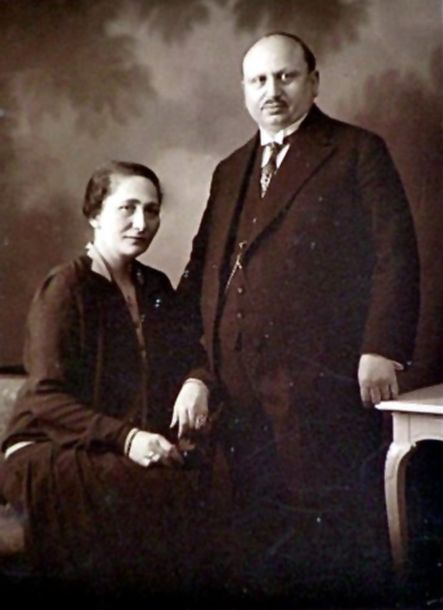
The Georg Lendt Department Store
At the end of the year 1903, Georg Lendt joined the business management as a third member. Mathilde had married thirty-year-old Georg, and together they planned to build a new business in the center of town. Large advertisements in the ‘Göppinger Zeitung’ (one of the local newspapers) announced this event, which was to take place on September 14, 1904. It entailed the complete sale of all goods in stock at the store at Marktstraße 11 as well as the opening of the new store at Marktstraße 8. The newly married couple had rented this large building from its owner Leopold Heumann, a Jewish factory owner. The firm ‘Heumann and Son’ came originally from Jebenhausen and since about 1875 had manufactured linen and cotton goods in Göppingen. In 1902 Leopold Heumann had relocated his ‘Mechanical Weaving Mill‘ to Schirmeck in Alsace.
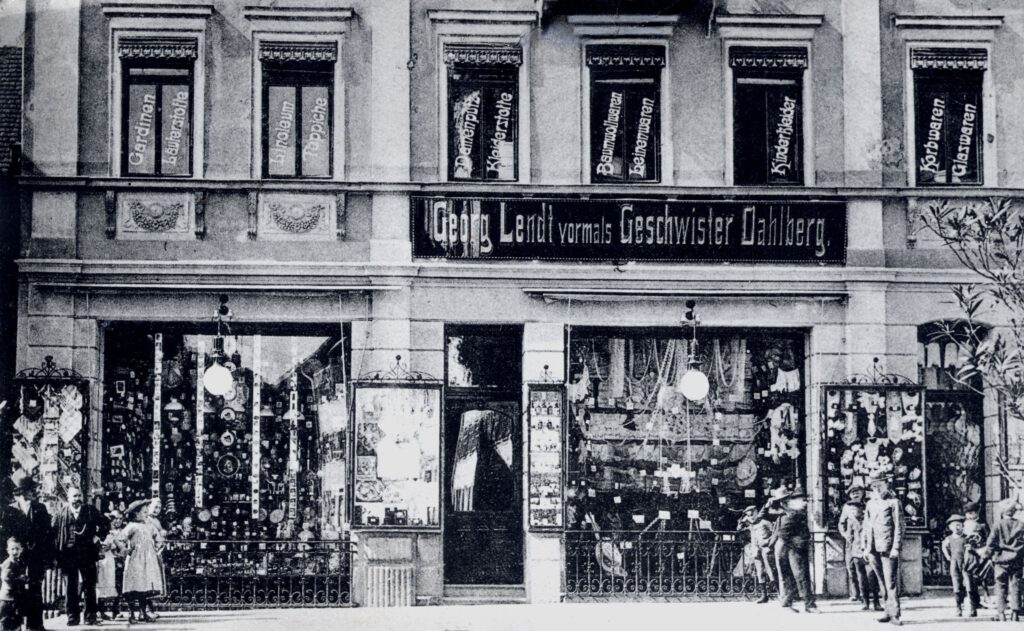
The Lendts moved into the stately building. On the ground floor there were sales rooms in two adjoining buildings and on the two upper floors the family had their living quarters. Next to the building was a courtyard as well as a vegetable garden, which belonged to the property. On October 1, 1904 the family welcomed a daughter they named Margarete. Three years later a sister, Gertrud, was born on July 29, 1907. Both daughters grew up privileged because Georg Lendt’s businesses were going very well. In 1911 Georg was able to acquire the neighboring building at Marktstraße 6.
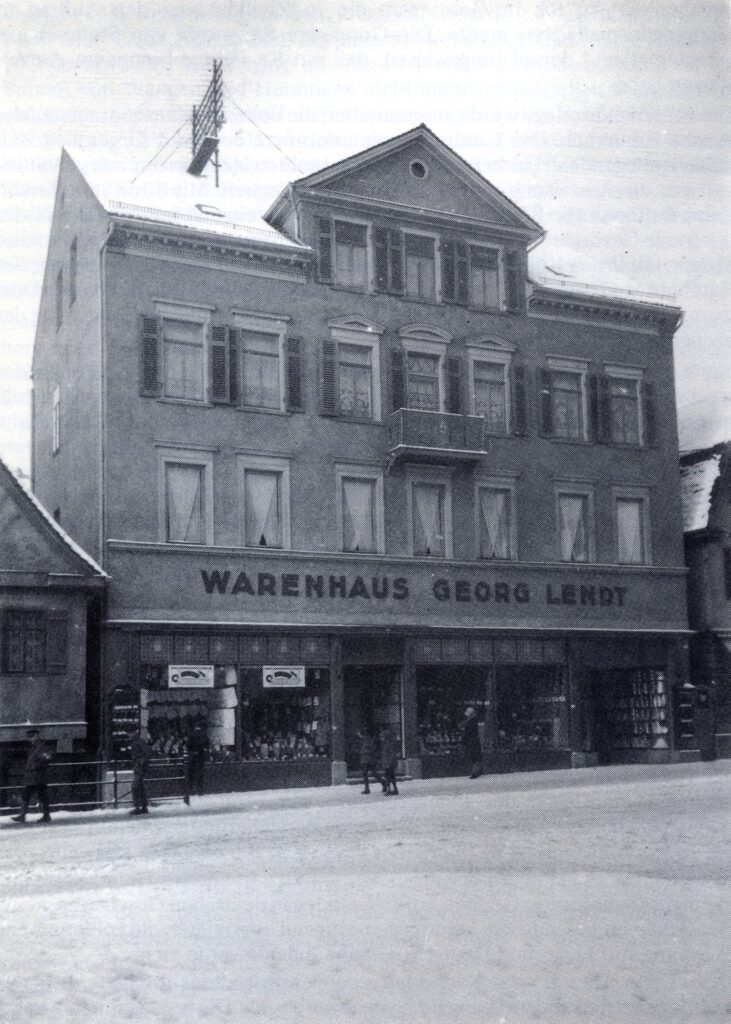
What was being sold at the Lendt department store? Actually everything! At the September 1904 opening a wide selection of dry goods and notions, cotton goods, soap and perfume, pottery, underwear and aprons, household goods, glassware, menswear and umbrellas, enamel goods, lining fabrics, and baking trays were being offered. Mr. Lendt was able to sell everything at a low price, because he purchased the goods wholesale at a reasonable cost. When he was able to get a specially low-priced item onto the shelves, he placed large ads in the newspaper and when the low-priced item was sold out, he made other ‘good catches’ available. Those way products changed constantly. Sometimes there were gloves, ties, coats; then petticoats and corsets for the ladies; then at other times there would be backpacks, books and pencils; then lamps and baskets; and sometimes pictures, candles or walking canes were offered for sale. The variety of goods was endless and the favorable prices lured customers into the store. And when a product did not sell very well, the shoppers could enjoy additional discounts. At any rate the store was a treasure trove and the competition had a hard time keeping up with such favorable prices. A witness from that time remembered that Georg Lendt had a soft spot for children. When their mothers were shopping, he would slip them small presents.
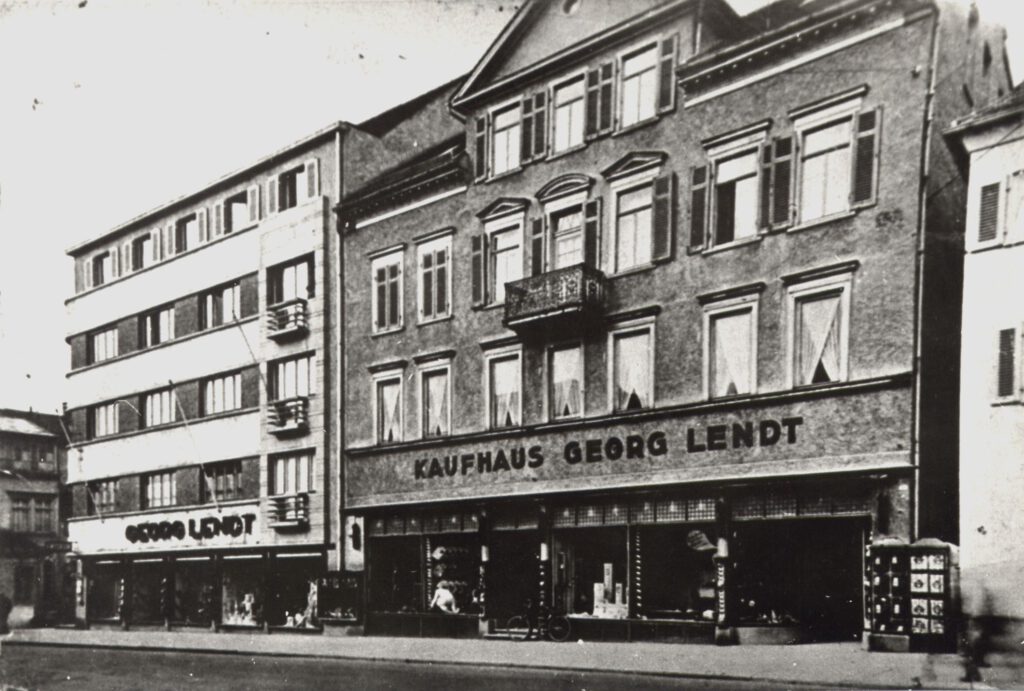
But Georg Lendt displayed his talents not only through financial success, but he took an active part in the Israelite congregation of Göppingen as well. Starting in July 1927 he acted as recording secretary of the Israelite Men (Auxiliary) Club and was its chairman himself. His wife Mathilde was active in the congregation too as board member of the Israelite Women Club. Their oldest daughter Margarete gained from her education by serving as librarian of the Israelite Youth Club.
In 1927 her younger sister Gertrud married Siegfried Rohrbacher, who shared freelancing and ideas at various Israelite clubs in town. In 1933 the Rohrbacher’s founded a local Zionist chapter in Göppingen together with other members of the Israelite congregation.

It is fortunate that members of the Lendt-Rohrbacher family loved to produce home movies. At the birthday celebration for Mathilde Lendt the whole family is gathered around the table for coffee and cake, which can be seen in the movie. Everyone is in a good mood, host Georg Lendt seems cheerful, body and face reflecting contentment. His wife Mathilde, 60 years old, who had worked her whole life in the business alongside her husband, appears relaxed and comfortable in her role and position. This film, which was given to Dr. Ruess by Gertrud Rohrbacher shortly before her death, is an invaluable document. Later on, these private pictures were included in the film “Alle Juden raus” (All Jews out), a documentary about the ‘Persecution of the Jews in a small German town from 1933 to 1945’.
The ‘Arisierung’ (‘Taking Over by Aryans’) of the Georg Lendt Department Store
After the power grab by the National Socialists in March 1933, the lives of the family as well as those of other Jewish citizens in Germany became very difficult. As a successful merchant, Georg Lendt soon felt the envy of this ‘Aryan’ fellow citizens. The boycott of his store on April 1, 1933 and the exclusion from society laid out in the ‘Nuremberg Racial Laws’ were the reasons why his daughter and son-in-law Rohrbacher immigrated in December 1936 with their three-year-old daughter Mirjam and ten-months-old son Michael to Palestine. The ‘Flammenzeichen’ (‘Sign of the Flame’), an inflammatory Nazi newspaper, commented on the departure of the Rohrbacher family with the following statement:
“The Jew Rohrbacher sold his factory, which produces cleaning goods under the brand name ‘Kinessa’ several weeks ago. Supposedly he and his wife, née Lendt, daughter of the department store Jew left for Switzerland. Apparently the department store is not doing well enough that father-in-law and son-in-law and their family can make a living from it.”
The Rohrbacher family emigrated in summer 1947 because of health and financial reasons from Palestine to the USA. Georg Lendt’s oldest daughter Margarete, nicknamed Grete, who was married to Kurt Goldschmidt since 1930, had lived for several years in Cologne with her husband and son Steven, the latter was born in 1933. In 1939 they first fled to England, and then immigrated in the USA.
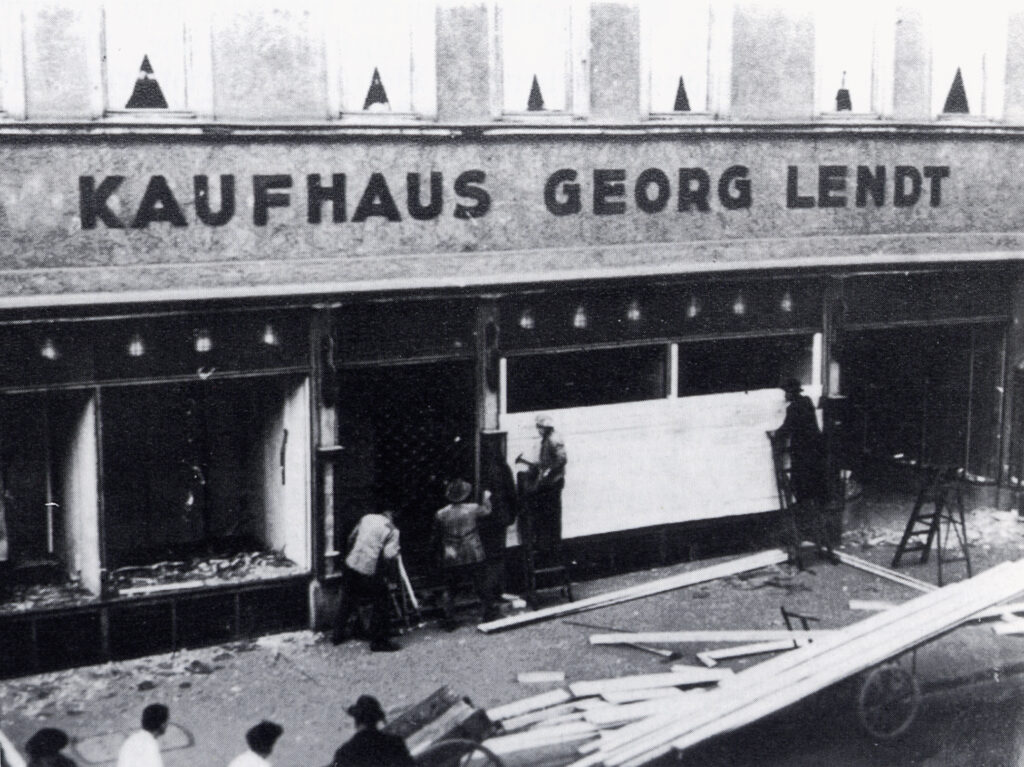
During the Pogrom Night on November 9th to 10th, 1938, Georg and Mathilde Lendt had to live through terrible events! After an evening of comradeship “in honor of” the failed Hitler putsch in 1923 the mob of the Third Reich felt very powerful. Especially SA-Obersturmbannführer Otto Schraag, fueled by beer, demonstrated his primitive power. Being the ring leader he had himself driven in a Kübelwagen (light truck) to the Lendt department store at Marktstraße 8. Full of rage and hatred he began to kick in the display windows of the Jewish store with his boots. It appears that he also pushed his way into the private living quarters of the Lendts’ in order to destroy it. Despite overwhelming evidence against the defendant Schraag it could not be proved after the war that he had instigated the systematic destruction of the display windows, nor the brutalities carried out at the Lendt store. Several witnesses confirmed that a crowd of ‘at least 15 men’ had gathered in front of the Lendt store during the night and jointly committed these brutalities, among them the destruction of the Lendt department store display windows. It also was never clarified during the criminal court trials in 1948 and 1949 who committed the crimes against the Lendts’, whether it was the ring leader Schraag or the crowd of men. But the fact remained that eight store windows had been broken and the displayed goods could be found on the street. Finally the defendant Schraag was sentenced to one year in prison for “a crime of disturbing the peace”.
Ten years later a former employee of the Lendt department store testified during the reparation trials that a bullet hole was visible in the ceiling of the Lendts’ apartment on the day after the Pogrom Night. Daughter Margarete Goldschmidt, who had been visiting her parents on that day, added that she had been attacked and threatened with a pistol. No court of law in Nazi Germany made any judgements in favor of the Jews who were attacked and arrested during the Pogrom Night. But even a long time after the downfall of the Nazi dictatorship, the people of the legal system in Germany was not sure if the criminals of the National Socialist state should be found guilty at all – since they were acting under the laws in effect at that time.
Georg Lendt, like other male citizens of the Jewish faith too, was subjected to the arbitrariness of the Nazi regime. He was arrested during the night of November 9, 1938 and had to spend 24 hours in the jail of Göppingen. He was ‘lucky’ that he was not sent for ‘re-education’ to Dachau concentration camp like 27 other men of the Jewish community of Göppingen. He was able to return home to Marktstraße 8, but not for long. Because of the decrees and measures starting April 1938, the so-called “Exclusion of the Jews from the Economy” laws, Georg Lendt’s business experienced heavy losses. Customers as well as suppliers stayed away. Therefore he decided to sell his business. A few days after the Pogrom Night he came into contact with an interested buyer from Faurndau. When Göppingen’s Nazi lord mayor Dr. Pack heard about this he threatened as well Lendt, the seller, as the prospective buyer – if the sales negotiations were not canceled, he would have to take action against them. He himself planned to support his bowling friend Carl Theile to take over the business. Businessman Theile had received a tip from an acquaintance, SA-Obersturmbannführer Schraag that Jewish businesses could be purchased now very ‘favorably-priced’, this meant much below the real market value. The Nazi clique of the town stuck together. During the sales negotiations they put Georg Lendt under pressure. Without rights he was forced to take a big loss as the seller and to accept Nazi sympathizer Theile as buyer.
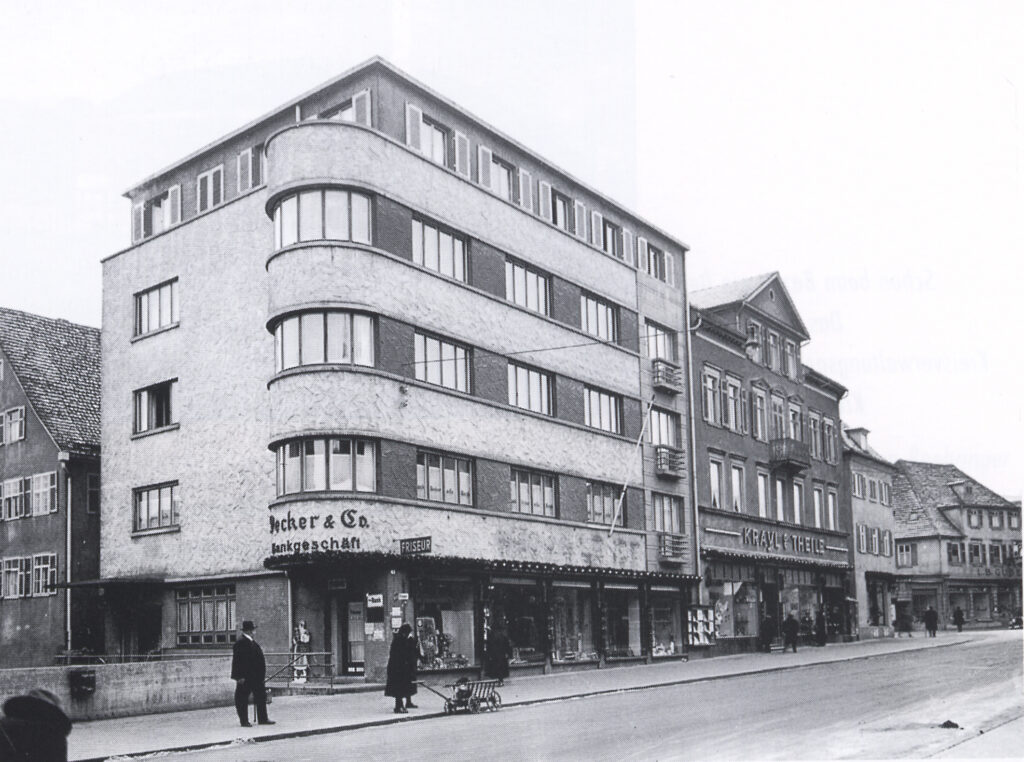
In December 1938 Carl Theile re-opened the department store, now ‘aryanized’. Karl Krayl entered the corporation as joint partner, however he was only active in the firm until May 1939. Carl Theile got into serious cash flow difficulties when his former partner requested the return of the RM 70,000 which he had invested in the firm. Once again Dr. Pack entered the picture and got into contact with Thekla Dietrich, his destitute sister-in-law, to whom he advanced RM 10,000. Theile was forced to take out an additional loan of RM 50,000 otherwise he would have had to declare bankruptcy. Due to these financial difficulties as well as the war it can be assumed that the store was not profitable. Therefore its value had decreased considerably when Carl Theile was forced to return it to Georg Lendt’s heirs in 1949 during the reparation proceedings. The Orion business corporation took over and re-opened the former Lendt department store in April 1949.
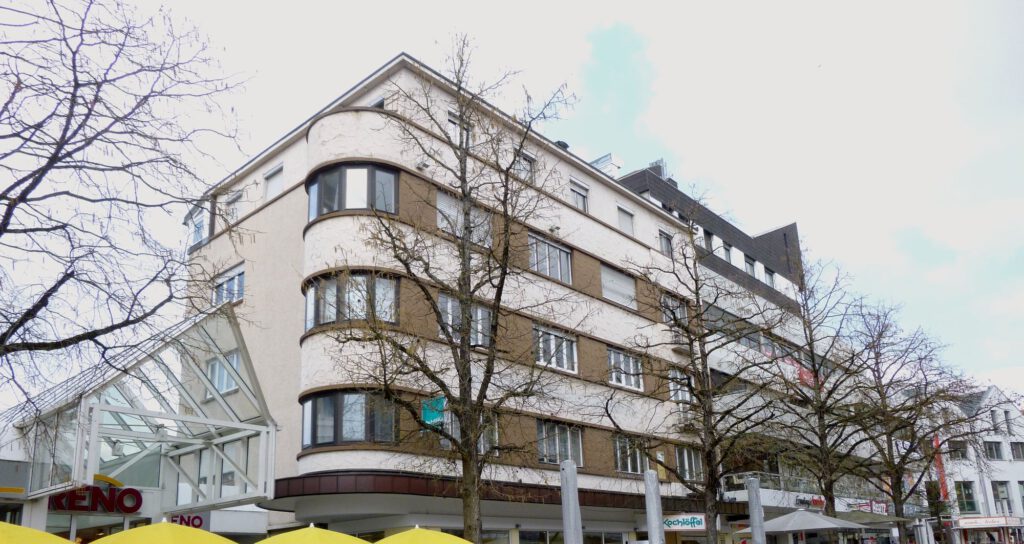
The Denunciation
Georg Lendt had to watch the economic downfall of his firm from his new apartment. After the forced sale of his business Georg and his wife were assigned two rooms and a small kitchen in the former house of fellow Jewish citizen Carl Veit at Wilhelm-Murr-Straße – today Mörikestraße 30. The rooms must have been cramped, because the Lendts tried to take most of the furniture from their former and much larger apartment. They had had a salon with a piano, a living room, a bedroom, two children bedrooms and playroom, a guest room and a modern kitchen. The Lendts had been well-to-do. Furnishings, carpets, dishes and silverware were of high quality and did not escape the greed of the Gestapo. According to witness statements made during the reparation proceedings after 1945 the inhabitants of Wilhelm-Murr-Straße were subjected to surprise inspection visits by local detectives who by chance took any valuable pieces which they fancied.
If anything suspicious was to report, they were supposed to pass the information on to the Gestapo office in Stuttgart. Did they ever report that Mathilde Lendt became seriously ill with cervical cancer which had spread throughout her body, that she had suffered excruciating pain most likely without pain medications and that she died on August 18, 1940 at 7 a.m. in the apartment?
Did their former housekeeper Margarete Häfele, née Böhringer, already helped out the Lendts, who were being treated like outcasts? When Georg Lendt had to start wearing the ‘Yellow Star’ on September 1, 1941 Gretel (Margarete) was forbidden to have any contact with her former employer or even to help him in any way. Georg Lendt got to be the spokesman for the small Jewish congregation left in Göppingen in September 1941. The few people left feared the unknown as well as the whims of the Nazis to which they might have been subjected the next day. In addition some of them suffered from hunger after all savings had been depleted. Therefore it was like a gift from heaven when a brave woman secretly and under great danger to herself took some eggs and butter to them. Margarete Häfele, wife of master plumber Häfele in Göppingen and mother of a six-month-old girl gave eight to twelve unstamped eggs to Georg Lendt in June 1942. Jewish citizens had to get food rations in grocery stores under strictly controlled conditions. If someone circumvented the laws they were accused and prosecuted for crime against the ‘Consumption Regulation Laws’. Punishment followed. Mrs. Häfele’s relief action must have been observed by somebody. Even today witnesses report that she was denounced and there are still rumors as to who would have done this. When the Gestapo gleaned it, detectives were sent to the kitchen of the Lendts. The eggs and a little bit of butter were found there – and not only these eggs and the butter they found were confiscated, but the whole refrigerator as well. Everything was taken to the Gestapo office in Stuttgart. Georg Lendt was arrested immediately.
The police interrogated Mrs. Häfele too and threatened with punishment – probably even that she would be taken to concentration camp. At that time she lived all by herself with her baby in her apartment at Gerberstraße, because her husband was away on a construction trip. She could not cope any longer and committed suicide by hanging. Her corpse located four days later, the child was still alive. Karl Häfele moved with his little daughter into the apartment of his parents at Ulrichstraße. Did he know who had denounced his wife? How came the neighbors in this building, where everyone knew everything about each other, pay no attention to the baby’s crying?
There are different accounts of Georg Lendt´s whereabouts in prison. Was he being imprisoned in Göppingen, was he taken into protective custody in Stuttgart, and for how long so?
On June 13, 1942 he was arrested. On August 22, 1942 he was deported to the Mauthausen concentration camp in Austria near Linz. In the time between he was taken to the concentration camp in Welzheim. The place of his death, where he died on August 24, 1942 was the Mauthausen concentration camp. It was known as the one where inmates were treated with the most brutality comparing with the whole concentration camp system. In fact every prisoner was a death candidate.
Because Georg Lendt was already 69 years old, he would not have been suitable for work in the infamous punishment company in the quarry. A man who was not able to work and just a useless mouth to feed could be disposed of very simply: The prisoners were chased across a marked line on the ground. Once they crossed the line the guards had orders to shoot the ‘fleeing’ prisoners. That explains why on the death certificate of Georg Lendt the cause of death is notated as “shot while escaping”. According to the legal definition of that time and even afterward, the concentration camp guards were found innocent, because they were ‘only following orders’ – shooting prisoners on the run.
Further victims in the Lendt and Rohrbacher families
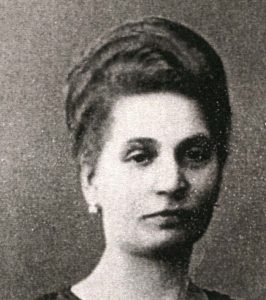
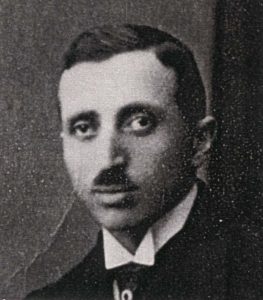
Georg Lendt’s sister, Eliese Jungermann, who was born 1877 and her family became victims of the Nazis too. Eliese at first lived with her husband Karl (Chil) Jungermann in Berlin where two sons and a daughter were born. The couple fled together with their oldest son Martin during the Nazi–time to the Netherlands. Martin married Eva Komkommer, a Dutch woman, in Amsterdam, and in August 1936 Eliese’s first grandchild, Jacques Jungermann, was born. In May 1943 Eliese and Karl Jungermann were deported to Sobibor extermination camp and murdered.
In June 1943 Elieses and Karl´s daughter-in-law Eva and her seven-year-old son Jacques lost their lives at Sobibor, while Martin Jungermann had already been murdered in July 1942 at Auschwitz extermination camp.
Norbert Nathan Garnmann, another relative and the widower of Georg Lendt’s sister Sarah (passed away in 1922), was murdered in Auschwitz in 1943.
Martha Baer, née Rohrbacher, was the younger sister of Siegfried Rohrbacher, the son-in-law of Georg and Mathilde Lendt. Martha lived with her husband Julius Baer and their daughter Edith in Stuttgart. While their daughter managed to flee to the USA in 1940, her parents were sent to the Theresienstadt concentration camp in 1942, where Julius Baer died in 1942. His wife was murdered by the Nazis in the Auschwitz extermination camp in 1944. Stumbling stones (link to the Stuttgart page) in Eberhardstr. 1 in Stuttgart commemorate the Baer couple.
Thekla Kahn, née Rohrbacher, was an aunt of Martha Baer and Siegfried Rohrbacher. With her husband Bernhard, who was employed as a teacher in Jebenhausen from 1890 to 1891, and their daughter Bella, married name Isenberg, this branch of the family lived in Lahr in the Black Forest.

Thekla, her daughter, and her grandson Fritz Heinz Isenberg were deported by the Nazis to the Gurs camp in France in 1940. Thekla Kahn died in January 1943 at the age of 74 in the Nexon subcamp due to the inhumane living conditions, while her daughter Bella Isenberg was murdered in Auschwitz in August 1942.

Stumbling stones for this family can be found at Lotzbeckerstr. 13 in Lahr.
On May 1, 2014 Gunter Demnig laid Stumbling Stones for Mathilde and Georg Lendt in front of the house at Marktstraße 8, where the couple had lived and where their store had been located. During the ceremony students from Werner Heisenberg High School presented texts and artwork related to the fate of the Lendts.
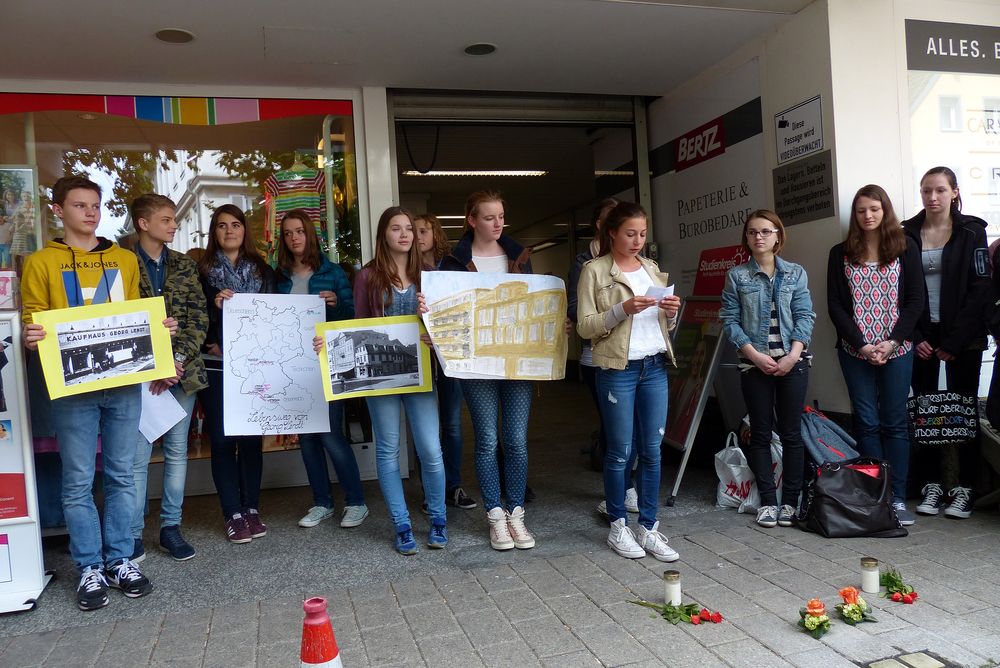
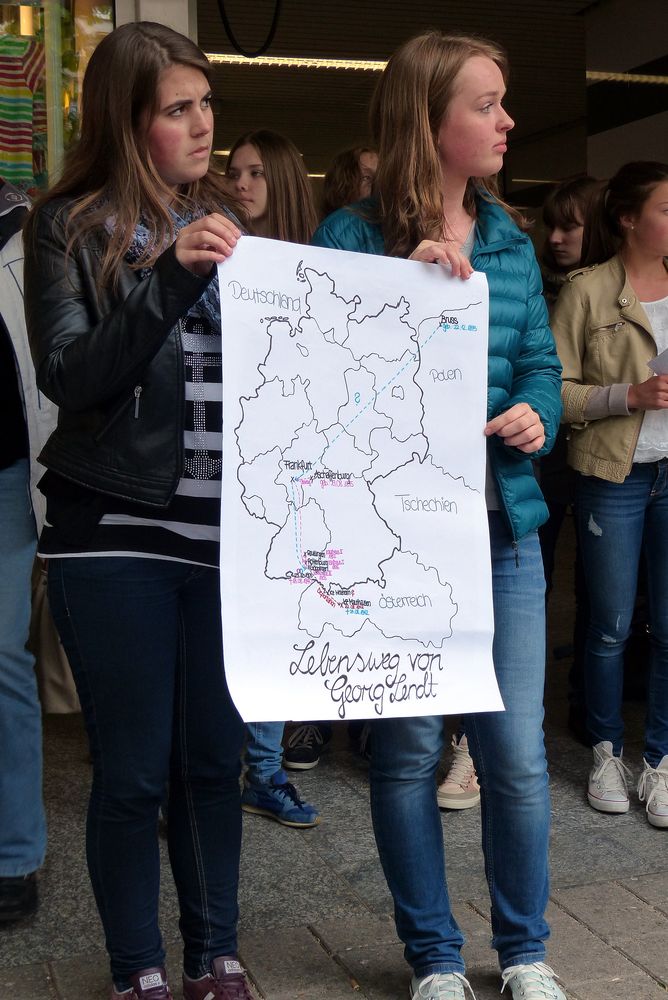
(12.09.2025 clm /kmr/wb)





















Leave a Reply